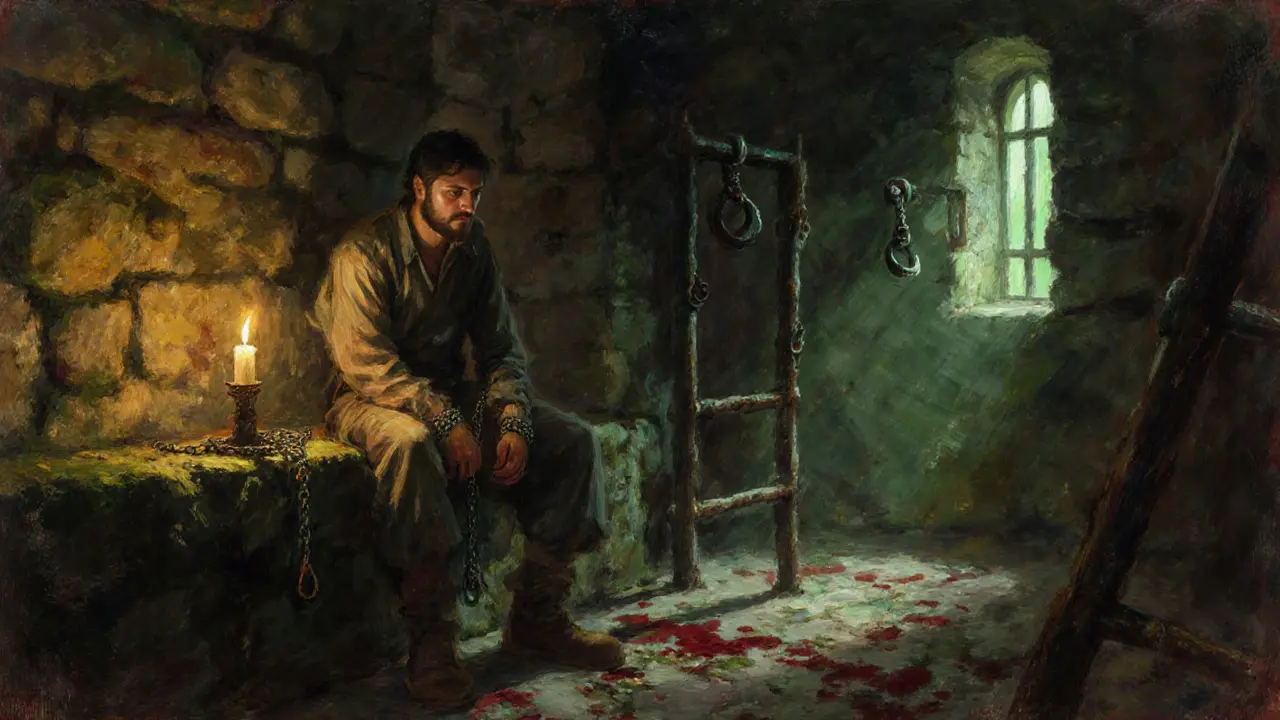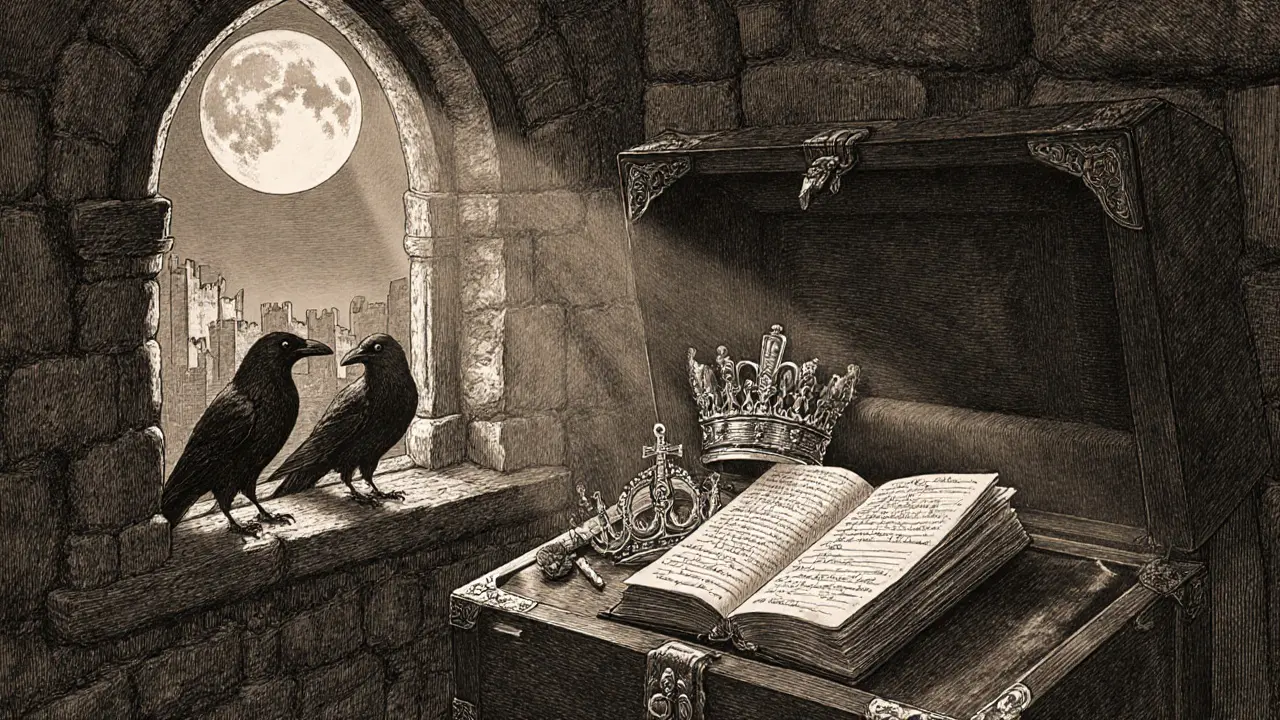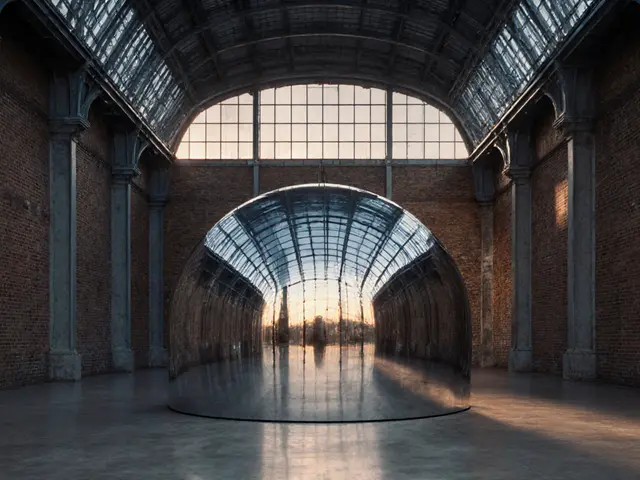In London, few places carry the weight of history like the Tower of London. While today it’s one of the city’s most visited attractions, with queues snaking past St. Katharine Docks and tourists snapping photos beside the ravens, it wasn’t always a spectacle for the public. Back in the 13th to 16th centuries, this was a place of fear, power, and survival - a royal palace, a prison, an armory, and a treasury all rolled into one. If you’ve walked its cobbled courtyards on a rainy afternoon, heard the echo of footsteps near the White Tower, or stood in the shadow of Traitor’s Gate, you’ve walked where kings and traitors once breathed the same thick, damp air.
Waking Up in the Inner Ward
Before dawn, the Tower was already stirring. The smell of woodsmoke from the kitchens mixed with the sour tang of latrines draining into the Thames. Guards in chainmail shuffled along the walls, their boots scraping against stone worn smooth by centuries of feet. Unlike today’s visitors who arrive at 9 a.m. with coffee from Pret A Manger, the medieval inhabitants rose with the sun - not because they wanted to, but because they had to. There were no alarms, no smartphones, no latte machines. Just the toll of the bell from St. Peter ad Vincula, the chapel still standing inside the walls, calling everyone to prayer.
The royal family, if in residence, slept in the royal apartments above the Wakefield Tower. Their beds were canopied with woolen hangings, their floors covered in rushes that were rarely changed. Rats scurried between the gaps, and lice were a fact of life. The king or queen might wake to the sound of a herald announcing the day’s schedule - a meeting with the Chancellor, a visit to the Wardrobe to inspect new robes, or a hunt in nearby Greenwich Park.
The Beefeaters and the Guard
The men who kept watch weren’t called Beefeaters yet - that nickname came later, from their rations of beef. Back then, they were the Yeomen Warders, loyal soldiers sworn to protect the monarch and the Crown Jewels. Their uniforms were practical: padded jerkins, steel helmets, and swords at their hips. They didn’t wear the flashy red and gold uniforms you see today. Those were introduced in the 19th century for show. In the Middle Ages, function came before fashion.
Each guard had a beat - from the Bloody Tower where princes disappeared, to the Salt Tower where nobles were held in solitary confinement. They didn’t give tours. They didn’t smile for photos. They were there to stop assassins, spies, and escaped prisoners. If you saw one standing motionless near the entrance to the White Tower, you didn’t ask questions. You kept walking.
Prisoners in the Dark
Not everyone in the Tower lived in comfort. For those accused of treason - and that included queens, bishops, and even former favorites of the king - life was brutal. The lower cells of the Bloody Tower were damp, cold, and lit only by a single candle. The air was thick with the smell of mildew and blood. Prisoners were fed bread, weak ale, and sometimes salted fish from the Thames. If you were lucky, you got a straw mattress. If you were a high-profile prisoner like Anne Boleyn, you might get a few extra blankets and a private chamber - but only because your execution was scheduled, and the king didn’t want your death to look like neglect.
Some prisoners were allowed to walk the inner courtyard under guard. Others were chained to the wall. The Tower’s dungeons weren’t just for punishment - they were for interrogation. The rack, the manacles, the iron boots - all were kept in the Wakefield Tower. You didn’t need a court order to be locked up. A whispered rumor, a rival’s accusation, or a king’s sudden distrust was enough.

The Crown Jewels and the Royal Treasury
Behind thick oak doors guarded by armed men, the Crown Jewels were stored in the Martin Tower. Not in glass cases like today, but in locked chests lined with velvet. The Crown of St. Edward, the Sceptre with the Cross, the Orb - these weren’t just symbols. They were weapons of power. Whoever held them held the right to rule. The Keeper of the Jewels was one of the most trusted men in the kingdom. He slept in the tower with them, day and night.
At night, the jewels were counted. Every pearl, every ruby, every diamond was recorded in a leather-bound ledger. If one went missing, the keeper could be executed. In 1303, a thief named William de la Pole tried to steal the crown. He was caught, hanged, and his body displayed on London Bridge. That’s how seriously they took security.
Food, Drink, and Daily Life
Meals in the Tower were simple but plentiful for those in favor. The royal kitchen, located near the Byward Tower, served venison from the royal forests, pheasant from the moors, and salmon caught fresh from the Thames. Bread was baked daily in the ovens, and ale - strong, thick, and safe to drink - flowed constantly. Wine came from Gascony, shipped upriver from Southampton. For the guards and servants, meals were basic: pottage (a thick stew of beans, barley, and scraps), onions, and cheese from nearby Cheddar.
There was no pub inside the Tower, but there was a brewhouse. And no one drank water unless they had to. The Thames was filthy - full of sewage, animal waste, and dead fish. Even the king drank ale. Children drank small beer - a weak, low-alcohol brew that was safer than water. If you were sick, you might be given a spoonful of honey and vinegar. Or, if you were unlucky, a leech.

The Ravens and the Superstition
You’ve probably heard the legend: if the ravens leave the Tower, the kingdom will fall. That story is older than you think. In the 17th century, Charles II was told that the ravens were attracting too many flies. He ordered them removed. The astronomer royal, John Flamsteed, warned him: remove the birds, and you remove the kingdom’s luck. Charles relented - but only after ordering six ravens to be kept, with their wings clipped so they couldn’t fly away.
Today, the ravens are still cared for by the Yeomen Warders. Each has a name - Merlina, Munin, Jubilee - and a keeper. They’re fed raw meat, eggs, and blood-soaked biscuits. They’re not pets. They’re symbols. And in London, where tradition is as thick as the fog over the river, symbols matter.
Evening in the Tower
As dusk fell, the gates were barred. The last bell rang. The torches were lit along the walls. The only sounds were the creak of the drawbridge, the hoot of an owl from the battlements, and the occasional scream from a prisoner’s cell. No one left after curfew. No one entered without a royal warrant. The Tower was a kingdom within a kingdom - a fortress of secrets, power, and silence.
Even now, when you walk through the Tower’s gates, you’re stepping into a place where time hasn’t moved on - it’s just been layered. The same stones that held Anne Boleyn’s final steps now hold the footsteps of schoolchildren from Camden. The same chapel where Henry VIII prayed now hosts weddings. The ravens still sit on their perches, watching. And if you listen closely, on a quiet morning before the crowds arrive, you might still hear the echo of chains dragging across stone.
Are the Crown Jewels really kept in the Tower of London today?
Yes, the Crown Jewels are still housed in the Jewel House within the Tower of London. They’re displayed behind bulletproof glass and guarded by armed officers and the Yeomen Warders. The collection includes over 100 objects, including the 530-carat Koh-i-Noor diamond and the 317-carat Cullinan II. The jewels are officially part of the Royal Collection and are used in coronations and state ceremonies. They’ve been moved only a few times in history - once during World War II, when they were hidden in a disused mine in Norfolk.
Can you still see the original medieval prison cells?
Yes, several original prison cells are open to the public, especially in the Bloody Tower and the Salt Tower. You can see the iron rings where prisoners were chained, the narrow slit windows, and the crude stone benches. The walls are still damp, just as they were in the 1400s. Some cells have plaques listing who was held there - including Sir Walter Raleigh, who spent 13 years imprisoned here and even wrote a book in his cell. You can’t touch them, but you can stand where they stood.
Why do the Beefeaters still wear those old-fashioned uniforms?
The red and gold uniforms worn by the Yeomen Warders today date back to the Tudor period, but they were formalized in the 1800s under Queen Victoria. They’re not just for show - they’re part of a living tradition. To become a Beefeater, you must have served at least 22 years in the British Armed Forces, received the Long Service and Good Conduct Medal, and hold the rank of warrant officer. The uniform is a symbol of loyalty, not just history. They still live inside the Tower with their families - a tradition going back 500 years.
How did people get into the Tower in medieval times?
Access was tightly controlled. The main entrance was Traitor’s Gate, a water gate where prisoners arrived by boat from the Palace of Westminster. Royal visitors came by land through the main gate, but only with a written pass signed by the king or his council. Even nobles had to be searched. No weapons were allowed inside without permission. The Tower had its own customs officers, tax collectors, and even a mint - all operating under royal authority. It wasn’t just a castle. It was the center of government.
Is the Tower of London haunted?
Many visitors and staff report strange occurrences - cold spots, whispers in empty rooms, the smell of roses where Anne Boleyn was executed. The most famous sighting is the ghost of a young boy in the Bloody Tower, believed to be one of the Princes in the Tower. The Yeomen Warders won’t talk about it publicly, but some admit they’ve seen shadows move where no one should be. Whether it’s history, imagination, or something else, the Tower has a way of making you feel like you’re not alone.



